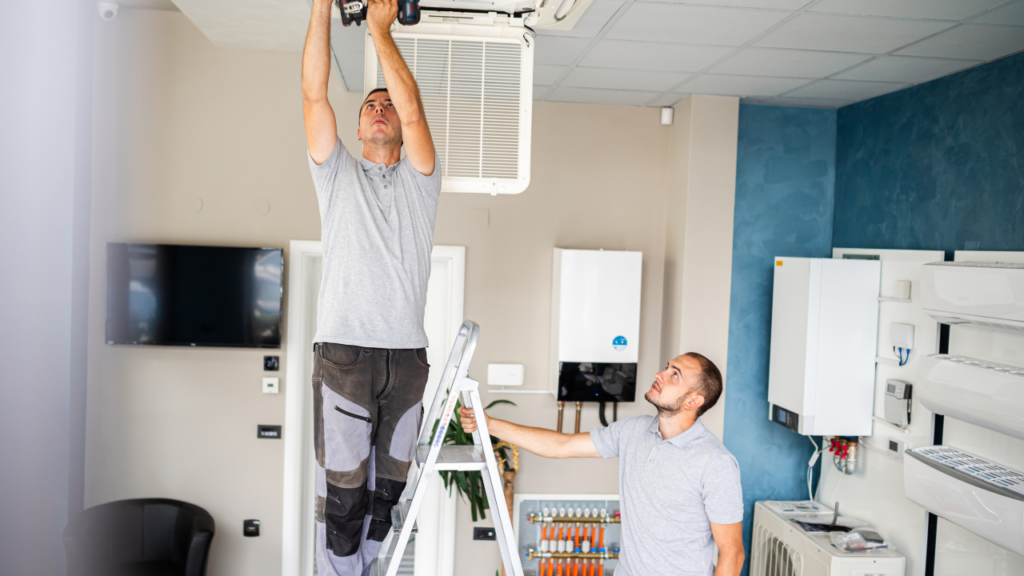Maintenance requests are a common part of being a tenant in an apartment complex or other rental property. Whether you’re dealing with a leaky faucet, malfunctioning electrical system, or another issue, it’s important to know how to submit your maintenance requests properly to ensure that they are resolved quickly and effectively. In this section, we’ll outline the best practices for submitting and tracking maintenance requests as a tenant to help you maintain a safe and comfortable living environment.
Key Takeaways
- Effective communication is key when submitting maintenance requests
- Include detailed information about the issue when submitting a maintenance request
- Track your maintenance requests to stay updated on their progress
- Maintain open lines of communication with property management regarding maintenance requests
- Take appropriate steps if your maintenance request experiences delays or goes unresolved
Understanding the Importance of Maintenance Requests

Property maintenance requests are an essential part of ensuring a safe and comfortable living environment for tenants. Prompt attention to building maintenance requests not only contributes to tenant satisfaction but also prevents minor issues from becoming larger, more costly problems. Regular property maintenance also helps to protect the overall value of the property.
Building maintenance requests can range from simple repairs to complex technical issues. A well-maintained property not only promotes safety and comfort but also reduces the risk of accidents and injuries. Apart from that, regular property maintenance helps to minimize energy consumption, leading to lower energy bills for both tenants and landlords alike.
In summary, maintenance requests should never be ignored as they not only affect the quality of life but also can result in more significant problems if left unaddressed. By reporting maintenance needs in a timely and detailed manner, tenants can help ensure a well-functioning property, providing a comfortable and pleasant living experience for all.
Types of Maintenance Requests
As a tenant, you may encounter various types of maintenance requests that require attention. It’s essential to identify the specific type of issue to submit a maintenance request accurately. Here are some common types of maintenance requests:
| Type of Maintenance Request | Examples |
|---|---|
| Plumbing issues | Dripping faucet, clogged sink, running toilet |
| Electrical issues | Power outage, malfunctioning switches, broken outlets |
| Appliance needs repair | Malfunctioning refrigerator, stove, or dishwasher |
| Heating and cooling issues | Broken thermostat, AC unit, or furnace |
| Structural issues | Leaky roof, broken windows, or damaged flooring |
| General repair needs | Paint touch-up, pest control, or door lock replacement |
Identifying the precise description of the issue will ensure that maintenance technicians take appropriate action and resolve the problem swiftly.
Reporting Maintenance Requests
As a tenant, reporting maintenance requests promptly is crucial for maintaining a safe and comfortable living environment. To ensure effective communication with the property management, clear and detailed descriptions of the issue should be provided. When submitting maintenance requests, tenants may use online platforms or designated forms, if available, to expedite the process and avoid potential delays.
To report maintenance requests properly, tenants should include all essential information such as their name, apartment unit number, preferred method of contact, and a detailed description of the issue. In addition, tenants may provide supporting documents or photographs to help clarify the issue further.
Once the request is submitted, tenants should receive confirmation from the property management that the request has been received and is being processed. In case of delay or lack of communication, tenants may follow-up with the property management to ensure timely resolution of the maintenance request.
Overall, submitting maintenance requests online can be more convenient and efficient for both tenants and property management, as it facilitates tracking and communication. By following the correct steps and providing necessary details, tenants can ensure that their maintenance requests are handled promptly and effectively, ensuring a comfortable living space.
You may also like: Apartment Rental Application Tips & Guide
Providing Essential Information
When submitting maintenance requests, it is essential to provide accurate and detailed information to ensure swift resolution of the issue. This includes specifying the nature of the problem, its exact location within the property, and any relevant supporting documentation or photographs.
Be sure to describe the issue as precisely as possible, avoiding vague or general statements. For example, instead of stating “something is wrong with the sink,” describe the specific problem, such as “the sink is leaking from the faucet.”
If possible, include photographs or videos to illustrate the issue visually. This can be particularly helpful for maintenance teams when dealing with complex or hard-to-describe problems.
Furthermore, provide contact information where the property management team can reach you for any questions or updates. This can include a phone number or email address where you can be reached during business hours.
By providing essential information, tenants can help ensure that maintenance requests are handled promptly and efficiently, minimizing any disruption to their daily lives.
Tracking Maintenance Requests
Submitting the maintenance request is not the end of the process. It is important to track the progress of the request until the issue is resolved. Tenants can use different methods to track their maintenance requests, such as:
- Online portals: Many property management companies offer online portals to track maintenance requests. Tenants can log in to the portal to check the status of their requests and receive updates on any progress made.
- Communication with property management: Tenants can also communicate directly with the property management team responsible for resolving the request. They can inquire about the status of their request and request updates via phone or email.
Staying updated throughout the resolution process is crucial. If the request takes longer to resolve than anticipated, tenants can follow up with property management for an update. They can also inquire about any possible delays and request an estimated timeframe for the issue to be resolved.
Communicating with Property Management
When it comes to maintenance requests, it’s crucial to maintain open lines of communication with your property management. This ensures that your requests are addressed promptly and that the necessary steps are taken to resolve any issues you’re experiencing.
After you’ve submitted a maintenance request, it’s important to follow up with your property management to ensure that it’s received and that action is being taken to address the issue. You can do this by calling or sending an email to the appropriate individual, as outlined in your lease agreement or building guidelines.
When communicating with property management, it’s important to remain respectful and professional. Avoid using aggressive or accusatory language, as this can damage your relationship with management and hinder your ability to resolve issues.
If you’re experiencing ongoing issues with maintenance requests, it may be necessary to escalate your concerns to a higher level of management or to seek assistance from specialized maintenance teams if such teams exist in your building. Remember, effective communication is key to ensuring that your living environment is well-maintained and that your needs as a tenant are being met.
Resolving Delays or Unresolved Maintenance Requests
Despite best efforts, maintenance requests can sometimes be delayed or left unresolved by property management. In such instances, it’s important to take appropriate steps to prompt action and ensure timely resolution.
If your request has not been addressed within a reasonable timeframe, the first step is to follow up with property management in a respectful and professional manner. Reiterating the issue and providing any additional necessary information can often help expedite the process.
If there is still no progress, consider reaching out to specialized maintenance teams, if available. They may be better equipped to handle unique or complex maintenance needs.
If all else fails, tenants may have legal options available, such as filing a complaint with local housing authorities or seeking legal advice.
Remember, prompt and effective communication is key when it comes to resolving maintenance requests. By working together with property management and utilizing all available resources, tenants can ensure a safe and comfortable living environment.
Conclusion
In conclusion, handling maintenance requests as a tenant is crucial for ensuring a safe and comfortable living environment. As discussed in this article, by understanding the importance of reporting such requests, identifying the type of maintenance required, providing essential information, and tracking the progress, tenants can help expedite resolution. Effective communication with property management and seeking resolution for any delays or unresolved requests is also necessary for maintaining a well-maintained property.
By following the best practices outlined in this article, tenants can avoid potential issues and contribute to a better living experience for themselves and their community. Remember, prompt action and proactive communication are key to ensuring a safe and comfortable living environment for all tenants.
You may also like: Renting An Apartment With Bad Credit

 We are Licensed Texas Real Estate Agents who help individuals with Bad credit, Bankruptcy, Broken leases, Evictions, and felonies locate quality housing. We even assist first-time renters as well. With years of experience, we have developed special relationships with multiple apartment complexes located in Texas.
We are Licensed Texas Real Estate Agents who help individuals with Bad credit, Bankruptcy, Broken leases, Evictions, and felonies locate quality housing. We even assist first-time renters as well. With years of experience, we have developed special relationships with multiple apartment complexes located in Texas.
Leave a Reply